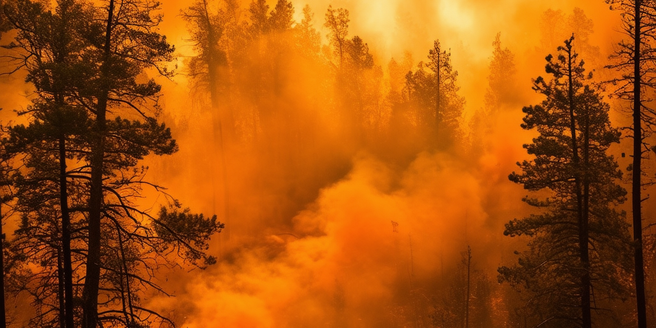
Understanding the Connection Between Allergies and Wildfires
Wildfire smoke comprises a range of harmful particles that can trigger allergies or aggravate existing symptoms. During wildfire season, pollen and mold counts tend to rise, and smoke can irritate the respiratory system, causing symptoms like coughing, sneezing, and shortness of breath. The ash and soot from fires can settle on surfaces, increasing exposure to allergens. People with a history of allergies or asthma may find their symptoms worsened by poor air quality associated with wildfires. Being aware of these conditions can help individuals take proactive steps to mitigate their exposure and manage symptoms effectively.
Common Allergens Aggravated by Wildfire Smoke
Wildfire smoke does not only pollute the air; it exacerbates common allergens such as pollen and dust mites. The heat and turbulence from fires release a mixture of gases and fine particles that increase an individual’s sensitivity to these allergens. In fact, studies have shown that even short-term exposure to such smoke can significantly heighten allergic reactions. Spores and molds, normally outdoor irritants, can infiltrate homes during fires, creating indoor environments that may be just as problematic as outdoor settings. Moreover, wildfire smoke can intensify the allergenic effects of existing outdoor pollutants, which means people with allergies need to be extra cautious during wildfire season.
Health Impacts of Wildfire Particulates on Respiratory Allergies
Particulate matter from wildfire smoke is particularly harmful to individuals with respiratory allergies. These tiny particles penetrate deep into the lungs, exacerbating symptoms and potentially leading to more severe health issues. Communities situated near forests often experience the adverse effects of wildfire smoke during peak fire season. Short-term exposure can cause symptoms such as wheezing, while long-term exposure increases the risk of chronic respiratory conditions. People with asthma may experience more frequent attacks and require more medication. Notably, children, the elderly, and those with existing respiratory conditions are at higher risk, making it crucial to reduce exposure and employ air quality improvement strategies.
Protective Measures: Minimizing Allergy Symptoms during Fires
To minimize allergy symptoms during wildfire season, it is essential to take several protective measures. Staying hydrated is also important for maintaining overall health during wildfire season. Staying indoors is crucial, especially on days with high air pollution levels, and using air purifiers with HEPA filters can significantly reduce indoor air pollutants. Sealing windows and doors prevents smoke from entering the home. Wearing masks designed to filter out fine particles when outdoors can also help. Additionally, maintaining a clean indoor environment by dusting regularly and using air conditioning instead of opening windows can protect against allergens combined with wildfire smoke.
Role of Climate Change in Intensifying Allergy Seasons
Climate change has intensified the severity and frequency of wildfires, subsequently impacting allergy seasons by lengthening and worsening them. With warmer temperatures and prolonged dry spells, an increase in pollen production has been observed, thereby elevating allergic reactions. As a result, healthcare systems are being stretched thin to accommodate the growing number of allergy sufferers. The altered bloom patterns mean that individuals are exposed to allergens for extended periods, and wildfire smoke further amplifies the effects. As climate conditions continue to shift, communities worldwide will increasingly face challenges from intensified allergen exposure compounded with wildfire pollution, necessitating adaptive strategies.
Long-Term Strategies for Managing Allergies in Affected Areas
Long-term management of allergies in wildfire-prone areas involves both personal and community-level strategies. Individuals should work with healthcare providers to update allergy action plans and adjust medications as needed. Community strategies include enhancing public awareness about air quality indices and promoting policies that reduce fuel loads in forests to mitigate wildfires. Local governments can play a crucial role by enacting regulations that mandate sustainable land management practices. Investing in infrastructure that supports clean air technology in homes and public buildings can also be beneficial. As climate patterns continue to change, proactive adaptation through societal education and personal health adjustments will be critical in managing allergy impacts effectively.
